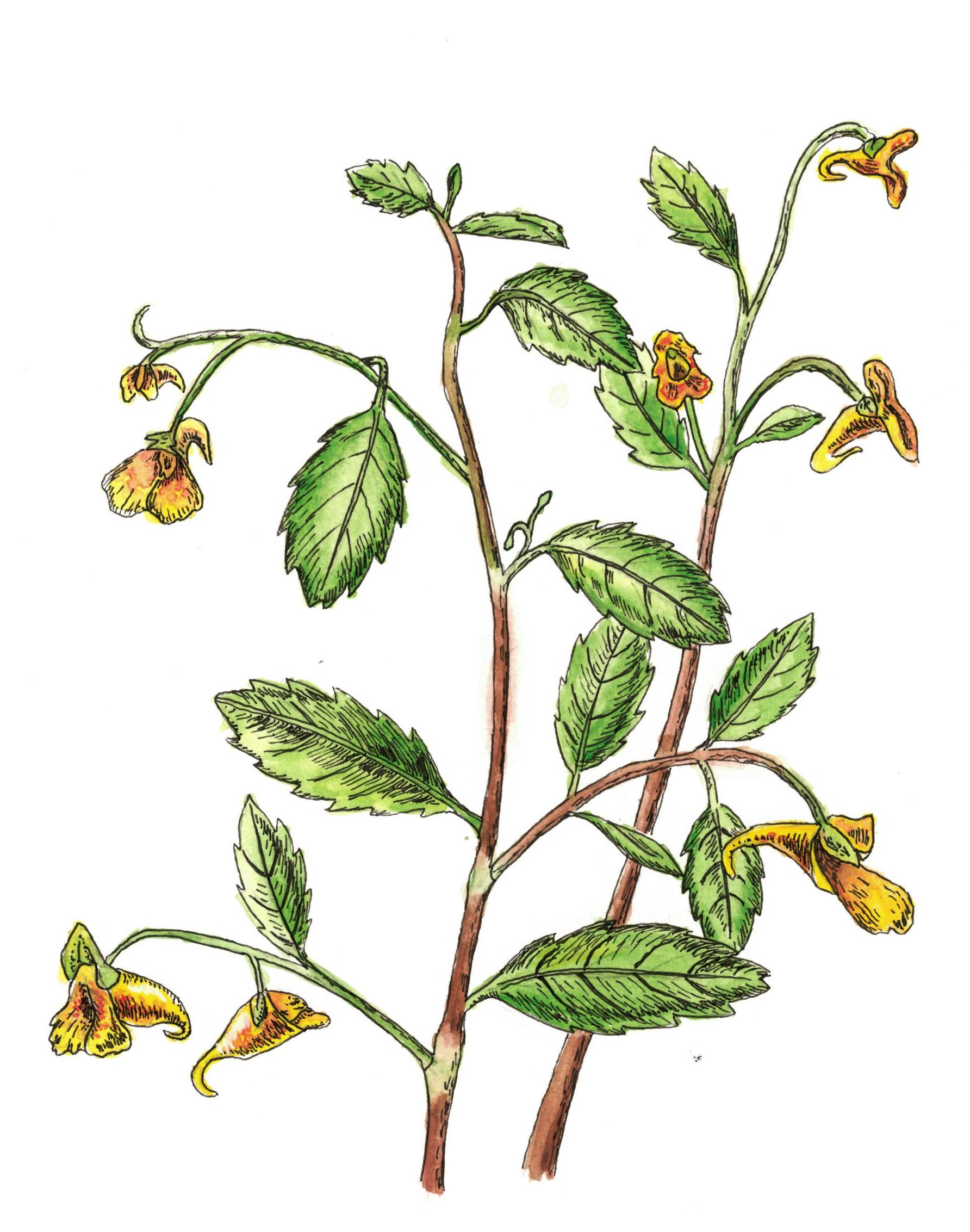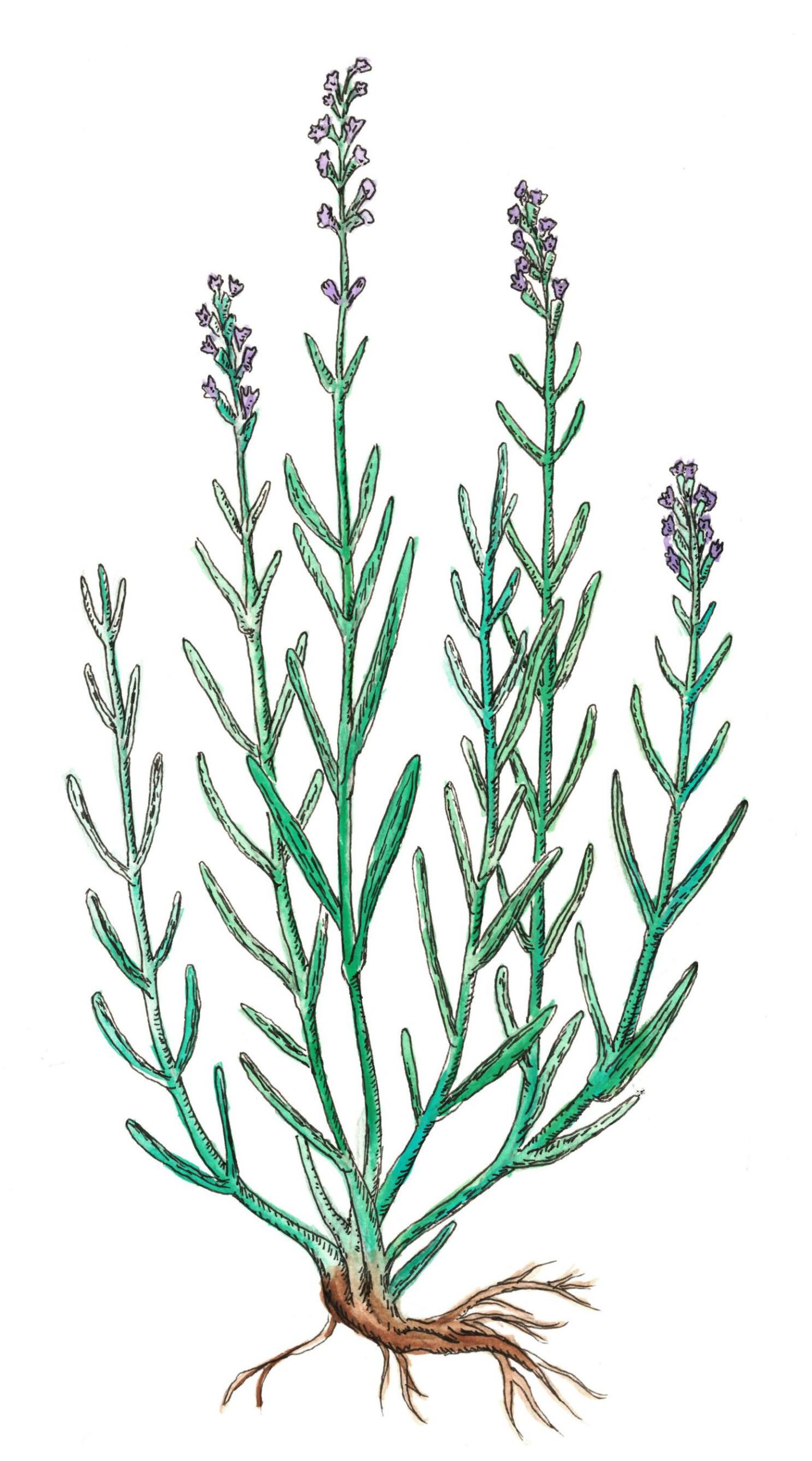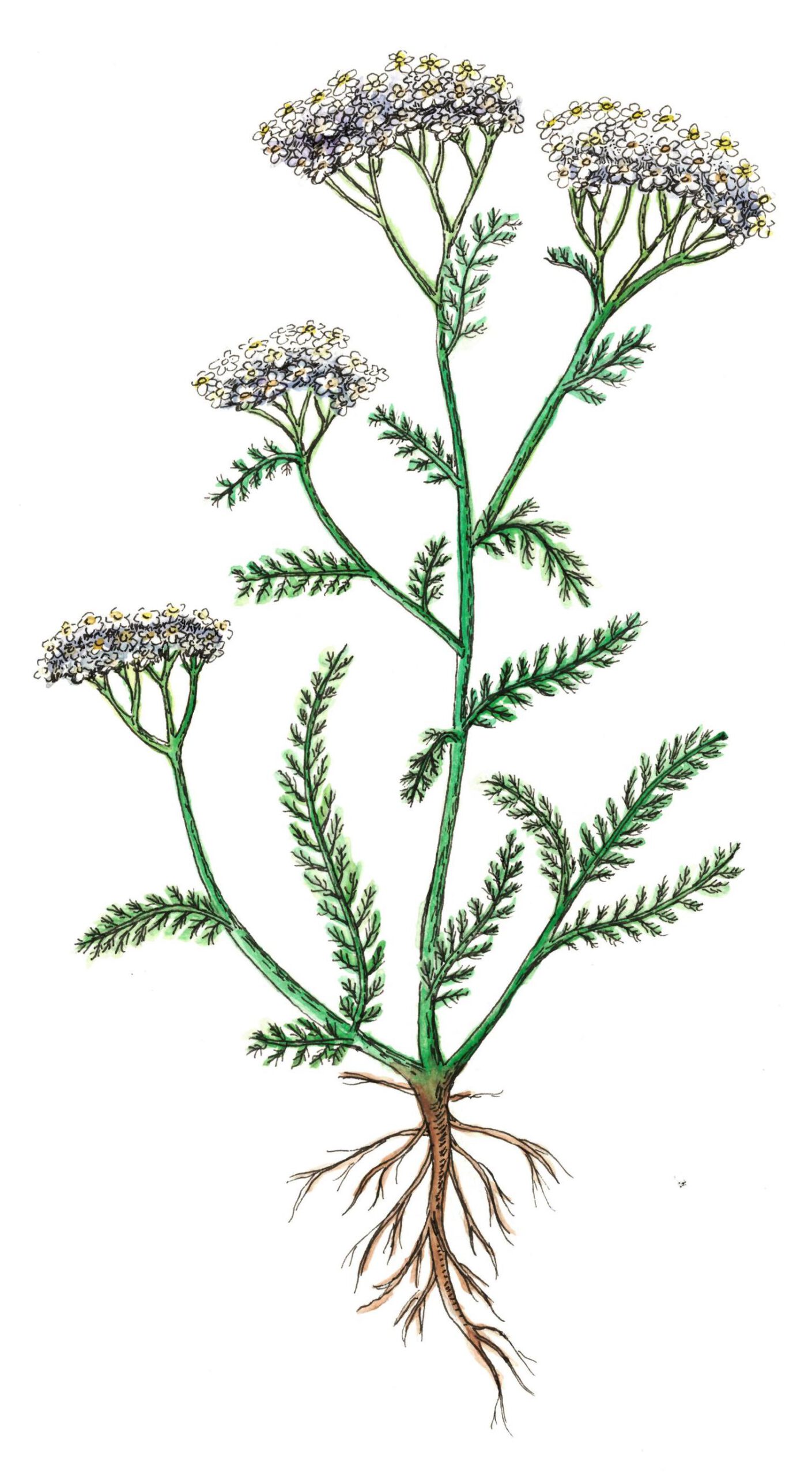Author: Lorena Tran
Jewelweed has historically been used to soothe skin conditions. In Japanese traditional medicine, crushed jewelweed flowers are used to combat itching, while in traditional Chinese Medicine, jewelweed leaves are recommended as a treatment for pain and swelling. Native American tribes also use jewelweed as a medicine to treat skin rashes from poison ivy and stinging nettles, as well as insect bites[1].
Researchers have found that mash made from blended jewelweed reduces rashes from poison ivy just as effectively as dish soap, which is another common treatment[1]. Jewelweed is effective at treating poison ivy rashes because it contains saponins, or compounds that behave like soaps. These compounds alleviate rashes by breaking down the oil that poison ivy deposits on the skin[2]. So, in situations where soap is not on hand, jewelweed provides a quick remedy for poison ivy exposure. In addition, jewelweed usually grows near poison ivy plants, which makes it a convenient treatment. The plant also has anti-inflammatory properties, which explains its ability to treat poison ivy and suggests that it could treat other inflammatory conditions, such as rashes and infections[3].
Sources:
[1] Motz VA, Bowers CP, Mull Young L, Kinder DH. The effectiveness of jewelweed, Impatiens capensis, the related cultivar I. balsamina and the component, lawsone in preventing post poison ivy exposure contact dermatitis. Journal of Ethnopharmacology. 2012 Aug 30;143(1):314-8.
[2] Motz VA, Bowers CP, Kneubehl AR, Lendrum EC, Young LM, Kinder DH. Efficacy of the saponin component of Impatiens capensis Meerb.in preventing urushiol-induced contact dermatitis. Journal of Ethnopharmacology. 2015 Mar 13;162:163-7.
[3] Grabowska K, Wróbel D, Żmudzki P, Podolak I. Anti-inflammatory activity of saponins from roots of Impatiens parviflora DC. Natural Product Research. 2020 Jun;34(11):1581-1585.


